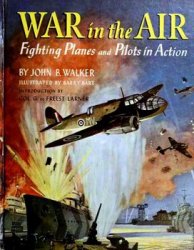FCA is established at Miami Springs in the spring of 1970 to operate contract cargo services. A Curtiss C-46 Commando is acquired and freighter flights around the Caribbean commence in June. Operations continue for a year until the government cancels the company’s operating certificate.
FLORIDA EXPRESS: United States (1983-1989). Organized at Orlando by former Midway Airlines (1) President/CEO Gordon Linkon, Kenneth W. Gann, and Robert J. Coombs in January 1983, Florida Express is initially financed (before going public) by Wallace Carroll, International Metals and Machines owner and chairman. Linkon becomes chairman/CEO; Gann is president/chief operating officer; and Coombs is vice president-corporate planning. As soon as possible, the nonunion company becomes partially owned by employees. Three BAC 1-11203 s are chartered from USAir.
The new entrant inaugurates low-fare scheduled BAC 1-11-203 service from its hub over a route to Norfolk, Virginia, on January 26, 1984. Service from Indianapolis to Orlando begins the next day. One more One-Eleven is acquired from USAir during the year, the workforce reaches 300 employees, and economy-fare frequencies are opened to Miami, Nashville, New Orleans, Fort Lauderdale, Tampa, St. Petersburg, Indianapolis, Louisville, Cincinnati, and Columbus.
Enplanements reach 280,825 and revenues are $20.94 million. Losses are $1.74 million (operating) and $1.9 million (net).
Airline employment in 1985 totals 280. Service to Richmond and Norfolk is suspended; however, flights are initiated to Birmingham, Milwaukee, Clearwater, Sarasota, and West Palm Beach.
Passenger boardings jump a spectacular 133.7% to 656,321 and revenues do better, climbing 150% to $52.4 million. With costs in hand, profits are made: $5.2 million (operating) and $4.4 million (net).
The fleet in 1986 includes 14 BAC 1-11-200s and 6 BAC 1-11-400s. These maintain previous services and launch new ones to Fort Myers, Knoxville, Akron, Canton, and Harrisburg. Flights are resumed to Richmond and Norfolk.
The ninth consecutive profitable quarter is celebrated at the end of December. Customer bookings swell again, up 47.2% to 1,415,142. Revenues ascend by 37.9% to $72.31 million, expenses climb 46.4% to $68.95 million, and the operating profit is $3.36 million. Net profit slides to $1.89 million.
Airline employment rises 20.8% in 1987 to 993 and 2 BACs are withdrawn.
A failure in the software of the reservations system subscribed to by the airline in January and February erroneously indicates to travel agents that many flights are sold out when they are not and requires most of March to put right.
Nonstop five-times-per-day jet service is launched between Sarasota and Bradenton and Orlando in May. Daily roundtrip jet flights to Orlando commence in June from Grand Rapids, Milwaukee, Harrisburg, and Wilkes-Barre. In July, the company begins its first international route from Orlando to Nassau in the Bahamas. Simultaneously, jetliner service begins to Orlando from Huntsville and Decatur.
The seasonal services begun in June are suspended in September; however, daily nonstops commence from Dayton to Orlando. At the same time, services are inaugurated to Milwaukee.
Financial difficulties ensue and, to regain fiscal viability, the carrier reaches agreement with Eastern Air Lines to become an “Eastern Express” carrier. This arrangement does not go through as, late in the year, the carrier is forced to accept a merger offer from Braniff, Inc., which will operate the carrier as a “Braniff Express” subsidiary during an integration period.
Passenger boardings leap upward by 9.4% to 1,547,522 and revenues climb 5.4% to $76.3 million. Expenses, however, exceed income, producing an operating loss of $13.8 million and net loss of $12.1 million.
The workforce is cut by 29% in 1988 to 705. With its 18 BAC 1-11s repainted in new livery, the large regional inaugurates “Braniff Express” services on January 15. Also in January, service is suspended to Dayton,
Huntsville, and Knoxville. Following the completion of all formalities, the Braniff, Inc. acquisition is completed on March 1.
In June, Braniff is acquired by developers Arthur Cohen and Jeffrey Chodorow. Orders are placed in September for Fokker 100s with which to replace the BACs and the route system begins a period of readjustment.
Customer bookings decline 23.5% to 1,183,971. Although revenues are up by 4.2% to $79.5 million, expenses climb 17.6% to $105.92 million. The operating loss doubles to $26.44 million and the net loss is more than doubled to $28.2 million.
The integration of the two airlines is accomplished in the spring of 1989. Costs of the previous year’s Braniff buyout and subsequent equipment orders and other changes force Braniff, Inc. into bankruptcy in November, with the attendant ripple ending the stories of both airlines.
FLORIDA GULF AIRLINES: United States (1991-1997). Established at Jacksonville, Florida, in late fall 1991, FGA is a subsidiary of Mesa Airlines. Former Air Midwest CEO Robert Priddy, who was also a founder of Atlantic Southeast Airlines, is named president and his initial fleet comprises 8 Beech 1900Cs. A “USAir Express” contract is negotiated and scheduled revenue flights commence in December serving the major’s Orlando hub from 22 communities.
A total of 7,847 passengers are carried by year’s end.
Eight more Beech 1900Cs are acquired during 1992 and, in January, seven new “USAir Express” flights are inaugurated from Jacksonville to Florida communities.
Enplanements this year skyrocket to 278,614.
In 1993, airline employment stands at 225 and 22 cities are served. Founder Priddy departs in March to launch a new airline, Charter Way. and is succeeded by Clark Stevens, former executive vice president of Metroflight.
In May, a 25-year lease is signed for 3.8 acres at Jacksonville where the carrier desires to build a 40,000-sq.-ft. maintenance facility. A new Northeastern division is established and “USAir Express” service is inaugurated from Boston to Martha’s Vineyard and Hyannis during the summer with a pair of Beech 1900Ds.
Operations continue apace in 1994 with a fleet of 39 Beech 1900C/Ds.
On August 23, the Mesa Airlines parent Mesa Air Group enters into an agreement to purchase a major packet of USAir assets for $28 million and to become the “USAir Express” feeder at Boston, Philadelphia, and Baltimore. Among the gains are nine Beech 1900Bs, five Shorts 360-300s, the leases on three more of the latter type, plus spare parts and support equipment. In addition, the maintenance and office facility in Reading, Pennsylvania, are taken over and headquarters for the Northeastern division are shifted on October 23. Two hundred additional employees are hired to accommodate the expansion.
“USAir Express” flights continue in 1995 from Boston, Philadelphia, Orlando, Tampa, and New Orleans. The fleet employed includes 40 Beech 1900s and 9 EMB-120s.
Operations continue apace in 1996.
Just after takeoff from Jacksonville on a March 28 ferry flight, a Beech propeller blade separates forcing an immediate engine shutdown and return to the Florida departure point. Neither of the two crewmen aboard are hurt.
During the first week of January 1997, Mesa Air Group is again reorganized. The operating divisions Desert Sun Airlines, Florida Gulf, Liberty Express, and Mountain West are replaced by four new units: “America West Express,” “Independent,” “United Express,” and “US-Air Express.” Also merged into the new divisions are the marketing and customer service departments of Air Midwest and WestAir Commuter Airlines. Florida Gulf is absorbed into the “USAir Express” unit.
On February 27, USAir is renamed USAirways and “USAir Express” becomes “USAirways Express.” During the remainder of the year, this regional will repaint its aircraft in a modified version of the major’s new grey and dark blue livery. A few weeks later, the division loses its identity entirely as it becomes USAirways Express (Mesa Airlines).
FLORIDA JET SERVICE: 2665 NW 56th St., Hangar 54, Fort Lauderdale, Florida 33309, United States; Phone (954) 772-0778; Fax (954) 491-4537; Year Founded 1991. FJS is established by Terry N. Robertson at Fort Lauderdale Executive Airport in 1991 to provide executive and small group passenger charters throughout the U. S. and Caribbean. By 2000, the company employs seven pilots and flies two Learjet 55 Longhorns and a Learjet 35A Century III.
FLORIDA WEST AIRLINES: United States (1981-1995). Originally known as Pan Aero International Airlines and Aero Exchange Airlines, this nonscheduled Tampa-based operator receives CAB charter authority in 1981 under the name Florida West Airlines. Employing a Boeing 707-331C, the company undertakes cargo charters and contract service flights to Bogota, Buenos Aires, Managua, Panama City, and San Jose during the next three years.
In 1984, the company proposes the initiation of scheduled flights to Baltimore, Charleston, Hartford, Houston, Miami, Orlando, and Tampa with B-737-200s, but this domestic authority is not received. Simultaneously, permission is received to inaugurate scheduled freight flights from Miami to destinations in South and Central America, Europe, the Caribbean, and the Middle East.
Employing its single B-707-331C, the cargo operator continues services in 1985, earning profits of $657,000 (operating) and $633,000 (net).
In 1986, airline employment is increased by 400% to 160 as 2 additional Stratoliner freighters are received.
Cargo traffic skyrockets 251.4% to 76.8 million FTKs and revenues shoot upward by 106.6% to $9.35 million. Expenses climb 90.3% to $7.16 million and the operating profit is $2.18 million. Net profit gains by 100% to $1.28 million.
Freight is increased by 21.1% in 1987 to 92.8 million. The 175-employee earns revenues of $17.3 million. Profits total $1.39 million (operating) and $204,000 (net).
A fourth B-707-320C enters service with the Miami operator in 1988 and helps freight to increase by 4.2% to 96.68 million FTKs. Revenues are level at $17.3 million, but costs jump 11.3% to force a $367,000 operating loss. There is a net loss of $1.4 million.
The fleet in 1989 includes two each B-707-331Cs and B-707-351Cs and one each B-707-323B, B-707-324C, and B-707-373C. Two other freighters are on order, one of which, a B-707-321C previously operated by CF Airfreight, is received in December.
Cargo climbs an outstanding 60.9% to 155.56 million FTKs. Revenues exceed costs and allow profits of $$1.48 million (operating) and $468,000 (net).
The B-707-323B is leased to Arkia Israel Airlines, Ltd. in 1990,
While the B-707-331Cs are both chartered out, one to LanChile Airlines, S. A. and one to Million Air.
Later in the year, as part of the international buildup of opposition to the Iraqi invasion of Kuwait, the company receives several freight contracts from the USAF.
Freight at the 350-employee carrier grows again, by 21.9%, to 190.56 million FTKs. Revenues total $34.97 million, expenses are $32.98 million, and the operating profit is up to $1.99 million. Net gain shoots up to $3.71 million.
The workforce is cut by 40% in 1991 to 210 due to a 12.6% reversal in freight traffic to 166.51 million FTKs. Although revenues are up by 29.3% to $45.17 million, expenses rise more quickly, by 38.2%, to $45.43 million. As a result, the operating loss is $266,690 and the net loss is $187,000.
Company employment is increased a whopping 66.7% in 1992 to 350. The fleet, however, is reduced. Two Stratoliners are repossessed by their owner, the Union Bank, and three others are sold to Omega Air, Ltd., an Irish lessor. Union Bank’s two planes will eventually be converted by Northrop Grumman into J-Stars airborne surveillance platforms for the USAF.
Late in the year, the company files for bankruptcy protection. Even so and with traffic down again, money is made. Cargo falls 19.6% to 133.95 million FTKs and revenues also slide, by 47.6%, to $23.65 million. Expenses, however, fall 48.5% to $23.39 million and grant an operating profit of $254,481. There is a net profit of $612,175.
In 1993, Chairman Craig K. Williams and President John J. Maloney oversee a workforce of 350 and a fleet still comprising 3 Stratoliner freighters. Scheduled destinations visited now include Bogota, Buenos Aires, Managua, Panama City, and San Jose.
The company is reorganized in July and emerges from bankruptcy; Maury Joseph becomes chairman, with Allen Beni as president, having purchased the airline from creditors for $4.2 million. The concern is taken public and begins to trade its shares on Nasdaq.
As a result of the bankruptcy and changeover, freight traffic for the year declines by 37.1% to 84.23 million FTKs. Revenues decline 14.4% to $20.23, but still there is an operating loss of $2.97 million. The net loss is $2.76 million.
In February 1994, most of the flight operations of North Carolina-based Tradewinds International Airlines are acquired. Florida West stock, traded on Nasdaq, hits a high of $16 per share.
The $5-million transaction with Tradewinds is completed in March, the same month in which an agreement is signed with United Airlines for the purchase of 5 B-727-222s and options on another 12. On March 1, two Douglas DC-9s and two B-727-200s are acquired from Aeron Aviation that will be converted to cargo configuration at the Miami maintenance base. The buying spree is completed with the purchase of a B-707F from Southern Air Transport.
Problems begin in April, when a freighter is seized after cocaine is discovered on board during a drug raid in Ecuador. Stockholders and the public are not advised. Some weeks later in May after word leaks out, shareholders file a lawsuit and the company’s auditors quit. Delays in filing annual and quarterly reports with the Securities and Exchange Commission trigger an SEC investigation of the volatility of Florida West’s stock.
Chairman Joseph and President Beni resign in July at which point former Arrow Air President Richard L. Haberly becomes CEO.
The financially troubled company lays off 54 workers in September. Overextended from its airline and aircraft acquisitions, the carrier files for Chapter XI bankruptcy in October, listing assets of $14.7 million and liabilities of $19.2 million. At the time of its bankruptcy, the company’s stock is valued at less than $1 per share.
Although Florida West continues to operate, the Aeron Aviation contract is terminated and the United Airlines arrangement is cut back to three aircraft.
For the year, cargo falls 24.7% to 77.18 million FTKs. Revenues decline 10% to $16.05 million and expenses swell 12.8% to $23.47 million. Losses advance to $7.41 million (operating) and $9.64 million (net).
The company continues to fly in 1995 while under protection of the bankruptcy court. On July 1 (effective July 12), the company and all of its assets and subsidiaries are sold to a new entity, Florida West International Airways, for $3.5 million. Under a new name, FWIA continues operations.




 World History
World History









